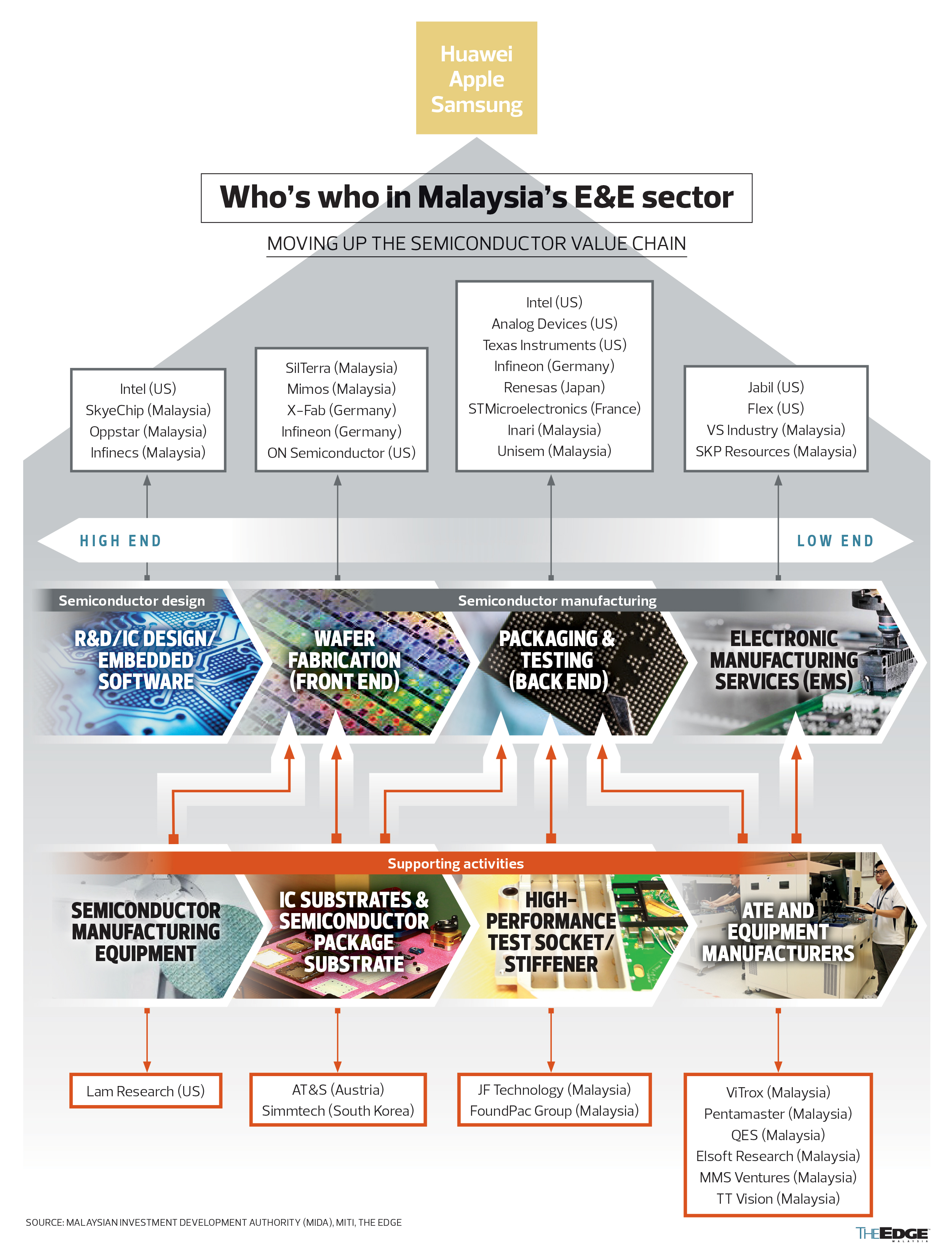All eyes on Malaysia amid global chip war
20 Jun 2024
IT is not very often that Malaysia garners global attention for good reasons. Amid escalating geopolitical tensions between the US and China, and supply chain diversification worldwide, Malaysia is now in a sweet spot to become a third force in the global semiconductor industry.
Following back-to-back reports by Financial Times and The New York Times in March, which claimed that Malaysia has emerged as a surprising winner in the global chip industry, the nation continues to attract the attention of foreign media from China, Taiwan, South Korea and Vietnam.
Some of these foreign media have even questioned their governments, highlighting Malaysia’s success in attracting foreign direct investments (FDIs) in the tech space, and urging their own countries to take similar action.
Ironically, this is something we Malaysians have been doing for years — urging our government to do more so we can catch up with the Four Asian Tigers: Hong Kong, Singapore, South Korea and Taiwan.
It feels strange, but gratifying, of course, to be envied by others.
While tremendous opportunities have now been presented right at our doorstep, it is not yet time to celebrate. Our work has only just begun.
As Prime Minister Datuk Seri Anwar Ibrahim unveiled Malaysia’s National Semiconductor Strategy (NSS) at Semicon Southeast Asia 2024 on May 28, most industry players agree that the initiatives and headline targets are precisely what the nation should aim to accomplish.
For the longest time, Malaysia has aspired to move up the electrical and electronics (E&E) value chain. However, there was no concrete plan or national road map to drive this — until now.
As Minister of Investment, Trade and Industry Tengku Datuk Seri Zafrul Aziz rightly pointed out, Malaysia has a “once-in-a-generation opportunity” to propel the country’s E&E industry forward.
“We must act now, become more resilient and seize the opportunity because failing to do so may result in a missed economic advantage that could set us back for years,” he said during a media briefing on the NSS in Putrajaya a day after it was unveiled.
The sense of excitement and anticipation of the opportunities that have come knocking on our door was palpable at the Semicon Southeast Asia 2024 exposition, recently held at the Malaysia International Trade and Exhibition Centre (Mitec) in Kuala Lumpur.
The bustling event that ran from May 28 to 30 (Tuesday to Thursday) was crowded with participants, so much so that Mitec’s parking lots were filled to capacity. And exhibitors gave overwhelmingly positive feedback.
The consensus is that the worst is over for the semiconductor downcycle and chip glut. Some even suggest that a bull run is possible in the second half of the year.
And Malaysia, whose Penang state has long evolved into an industrial hub for semiconductor and E&E products — earning it the nickname “Silicon Valley of the East”, will be right in the centre of it all.
Penang’s transformation from a thriving free port into a manufacturing and tourism hub started as early as the 1970s, when the state government, led by the late Tun Dr Lim Chong Eu, kick-started the state’s industrialisation.
The initiative attracted significant FDI and saw “The Eight Samurai” — the eight multinational corporations that brought the first wave of E&E manufacturing investments into Malaysia — setting up their operations here. They are Intel, Robert Bosch, Clarion, Advanced Micro Devices (AMD), Hewlett-Packard (now Keysight Technologies and Agilent Technologies), Litronix (now Osram Opto Semiconductors), Hitachi (now Renesas Electronics) and National Semiconductor.
Despite that strong start five decades ago, Malaysia stagnated in the E&E value chain, primarily remaining in the outsourced semiconductor assembly and test segment.
Even with the rise of the automated test equipment sub-sector in recent years, Malaysia has continued to struggle to elevate itself, particularly in front-end semiconductor design.
The newly launched NSS seeks to address this hurdle. As with all plans, though, success hinges on its execution. How effectively we implement these initiatives will determine whether we can capitalise on current global shifts and secure a favourable position in the semiconductor industry.
The NSS represents a pivotal step for Malaysia, but it is only the beginning. Malaysia must avoid past missteps and leverage this window of opportunity that has come upon us. The road ahead requires concerted efforts from all stakeholders, and the coming years are crucial in defining Malaysia’s trajectory in the high-stakes world of technology.
Can Malaysia regain its momentum and rise to the occasion?
The world is keenly watching. Let’s make sure we get this right.
Source: The Edge Malaysia



